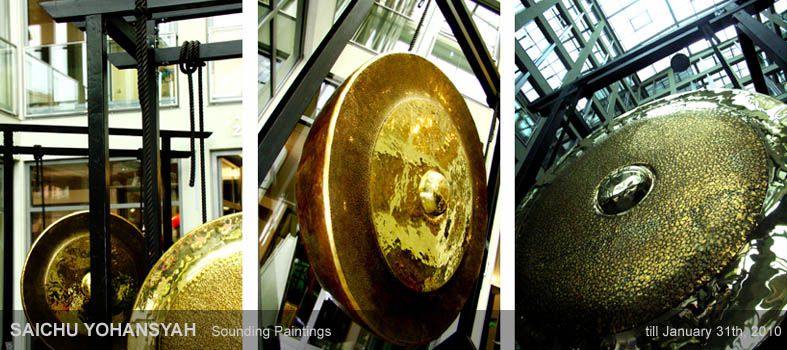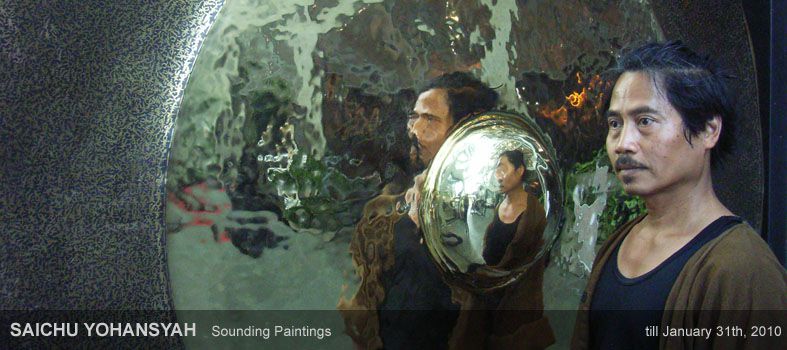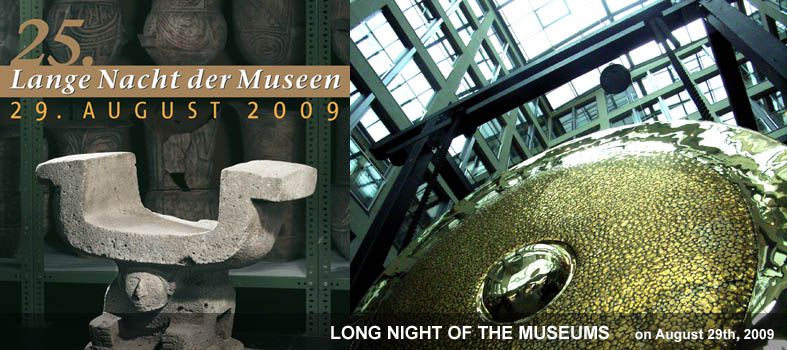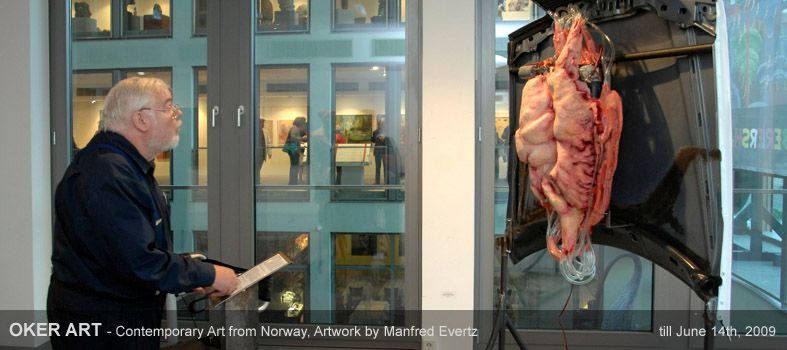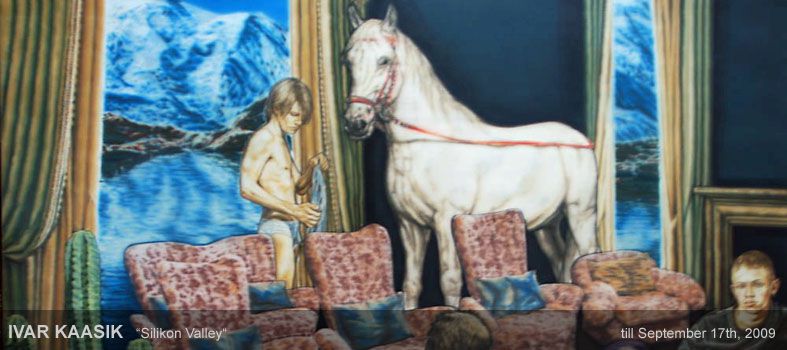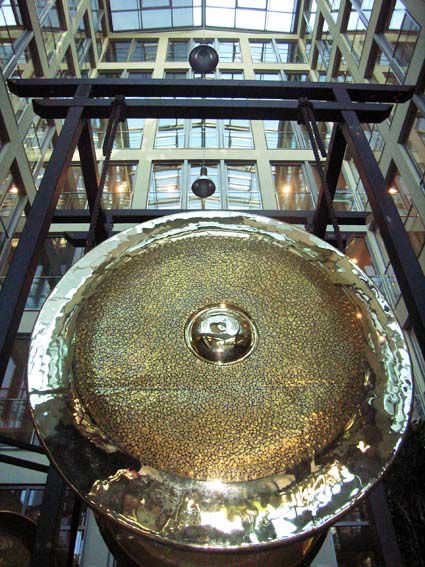
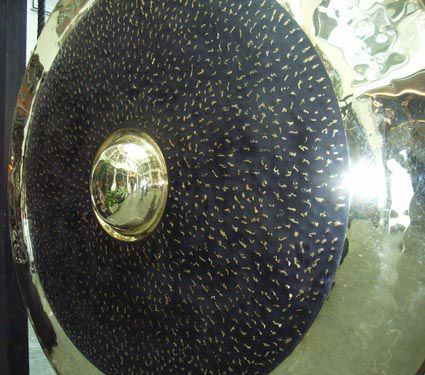
SAICHU YOHANSYAH (SAYO) - Javanese Gongs
till 31 Jan. 2010
My paintings are in a sense abstract. I use a new technique with "broken calligraphy" and forms, combining the light effects on the gongs to a shifting composition. My intention is to come from the intelligence of the mind to the intelligence of the heart, to guide from brain to intuition.
In general, I am working greatly reduced. I use only two colours, the brass coloured gloss of the ground together with the black. Thus I can create an intended polarity, symbolising every existing and imaginable polarity.
Born in Java, I grew up with Far Eastern philosophies. But I lived and worked half of my life in the western world, and I am moving between those different traditions as both person and artist. During a seven year journey through Asia, Europe, America, and Africa, my art could develop from the influence of various cultures.
Before I begin to work, I focus myself through meditation. Then, I try to follow my pure intuition.
The uniqueness of my "Sounding Paintings" is the new dimension. The painting "speaks" and urges the observer to be patient in two ways. Not only are the eyes activated, but also the sense of hearing is stimulated. Therefore the perception receives impulses by at least two ways; on the one hand through the eyes (Yang), leading the attention outwards, and on the other hand through the ears (Yin), turning the mindfulness inwards.
At the Art Center Berlin I show the biggest gongs worldwide, up to two meters in diameter. With the help of an old gong builder and his seven sons, I have forged those gongs in the mountains of Java. In my studio in Berlin, I dedicated many months to finish and paint the gongs.
Gong...
this word derives from the island Java and means simply its sound. Since 3500 years gongs are made on earth. From Java the gong came to Thailand, Burma, Cambodia, Vietnam, and China. In China, another kind of gong, the Tam-Tam, was produced and this Tam-Tam dispersed to Japan and Korea.
In the beginning, the people from Java used the gong for meditation: the gong player plays, concentrates on the tone and meditates, leaving his thoughts calm. From this silence, body, mind and soul can find harmony again.
In present Indonesia, the gongs are part of the orchestra for the Gamelan Music. The original appliance sinks slowly in oblivion. In the orchestra five different heights of gongs can be found. The biggest one is called Ageng (96 cm in diameter). In Europe gongs are often used for music and sound therapy.
Gongs are idiophones (and produce the sound by their own vibration), the vibration corpus of the instrument generates the sound, alike singing bowl (Tibet), bell, vibraphone, or cymbal.
The big gongs create with their sound countless frequencies (waves), which pass through the body. They can help to dissolve blockades of energy.
Important as well: the gong teaches us to listen. To listen means just listen without interpretation or evaluation. It is rather to get our mind some rest, and to rediscover the deep silence the soundless sound. -Sayo-
